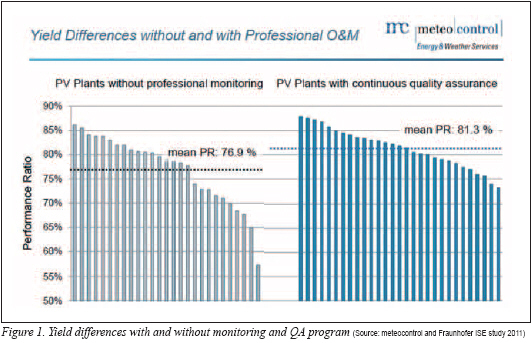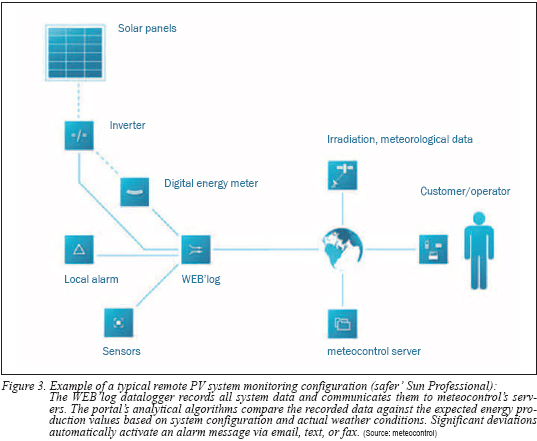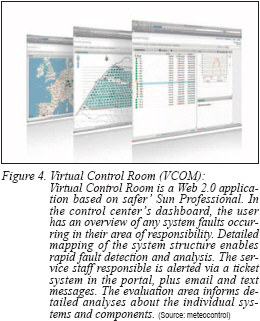By Benjamin Compton, Dr. Henrik te Heesen
.jpg)
The world has seen the Photovoltaic (PV) industry undergo extraordinary development in recent years. Major solar markets in the European Union and the United States have experienced explosive growth with the implementation of PV systems of nearly every size and configuration imaginable. Large centralized ground-mounted plants pump nearly 100 MW of power directly into high-voltage transmission lines, while small distributed residential rooftop systems offset several kilowatts of home energy consumption. Investment in solar projects is growing as developers and financiers recognize huge potential in the industry, due to a combination of regions with high solar radiation, favorable incentive structures, rising electricity rates, steadily declining module and component prices and continued improvements in the performance of individual components.
However, due to insufficient quality assurance practices during design and construction, along with the lack of adequate remote monitoring and professional O&M services throughout the operational phase, many PV systems fail to achieve optimized energy production levels. A recent study by meteocontrol and Fraunhofer ISE found that plants without a systematic quality assurance program incur an output shortfall of 5% on average (Figure 1). For a 1MWp solar plant in Germany or California, this would equate to a loss in revenue of more than US$20,000 each year.

To help solar developers, financiers and plant operators achieve their maximum PV system performance, we’ve outlined three critical strategies to improve overall yield and return on investment.

Strategy #1: Obtain Independent Yield Reports
Banks require revenue projections as a prerequisite for financing solar power plants. Energy yield forecasts are used to predict future output and projected income over the life of the PV system, based on location, key components such as modules and inverters and the specific system configuration. Yield analyses use long-term average global radiation values and detailed models that simulate every hour in a typical year to determine the expected annual yield.
Plant operators and investors must have a full understanding of the parameters of the solar yield simulation to accurately predict yields. At meteocontrol, we’ve found that there is typically only a 1-2% deviation of modern yield simulation programs from actual PV system operating data. The simulation results can be used to identify optimization possibilities for the design and construction of the plant, resulting in greater earnings potential over time.
Technical Takeaway
Use only industry-standard yield simulation programs, but remember: garbage in, garbage out. Energy yield simulation programs rely on many input values, some with wide degrees of uncertainty. Select trusted data sources for critical inputs, such as long-term irradiance, module ratings, and inverter efficiencies. Seek knowledgeable practitioners who have gained valuable experience applying feedback by comparing their simulations to actual operating performance. Third-party yield reports, which are required by more and more investors prior to funding solar projects, offer independent evaluation by recognized experts.
Strategy #2: Apply Technical Due Diligence and Construction Supervision to Prevent Errors
Technical due diligence is an integral step toward understanding the possible risks associated with a PV project and securing its long-term income stream. Careful planning and onsite construction supervision to monitor and review critical installation milestones are keys to overall success. A comprehensive final acceptance test must be included at the end of project construction to verify the system was built according to specifications. Although many believe this would be a natural last step, it is often overlooked as the PV system is commissioned and started up.
Due diligence involves a complete project evaluation with quality assurance steps throughout the design and construction phases:
1. Planning role: Detailed technical review of the entire project framework including all contracts, subcontracts, supply agreements and warranty terms. Technical review of specified components and system-level design for quality, reliability and maintainability.
2. Supervisory role: Quality assurance program designed to identify errors during installation as a means to correct early-stage problems, such as improper inverter installation or a defective module assembly.
3. Monitoring role: Review of manufacturers and start-up protocols, visual inspection and random sample surveys of the components, as well as verifying the actual implementation against the project specification.
4. Technical inspection role: After the completion of construction, a technical acceptance inspection verifies that the PV system is functioning properly. This step is essential for the long-term, sustainable protection of the revenue, and ensures warranty compliance while creating a baseline for future warranty claims against manufacturers.

Technical Takeaway
Apply a comprehensive, end-to-end technical due diligence process throughout the planning and construction phases. Review all project documents from a technical perspective. Validate component selection and system-level design concepts. Apply strict quality assurance measures during shipping and installation to identify and correct any problems early on. Hire an objective professional team to perform technical acceptance testing to verify that implementation was performed to specification and to ensure that the system is operating properly from the outset.
Strategy #3: Monitor the Daily Operation to Ensure Optimized Power Output
Properly designed PV monitoring systems capture readings from energy meters, inverters and environmental sensors. They also provide diagnostic algorithms and analytical routines that automatically generate alerts to the operator when certain faults or underperformance conditions exist.
Many defects in a PV system cannot be directly detected visually. With small PV systems, it is possible to check daily status indicators such as inverter or energy meter readings. However, for larger plants, such manual checks are not feasible. System operators require a tool that will automatically check PV system components and performance indicators and generate alerts when issues arise. Without a robust monitoring system to provide such alerts identifying faults and underperformance, overall yield values can drop as much as five percent on average.
As part of an effective overall operational strategy, implement a robust corrective action plan covering many types of typical faults and different scenarios. PV system operators must establish a rapid response protocol for any critical system failures. Once a fault has been identified, measures can be taken to determine the cause, eliminate the error and get the system running properly again.
Through monitoring or inspection, a service technician receives an accurate description of the malfunction so that problems can be resolved quickly. Annual inspections of the plant are included to detect possible malfunctions not directly identified by the remote monitoring system. This technical operations management program, including regular preventive maintenance, secures system operation and income during the 20+ year operating lifetime of the PV system.

Technical Takeaway
Develop a well-planned operational strategy that increases uptime while minimizing operating costs. Professional remote monitoring is the fastest and easiest method to minimize downtime. The monitoring software should offer the following basic features: system configuration, analytical reports, data visualization charts and advanced diagnostics with alerts based on identification of operational problems such as inverter failures or problems with sensors. Hire qualified O&M teams to manage the plant, perform preventive or proactive maintenance and respond quickly in situations requiring corrective action.
The Future of Quality Assurance and Yield Optimization
PV project developers that provide end-to-end quality assurance programs, with sustainable planning, construction supervision, technical acceptance testing, remote monitoring and robust operational programs, will usher in the next generation of improved solar plant performance. The U.S. solar market has years until it reaches maturity, but fortunately can benefit by learning from Europe’s decades of best practices and experience.
While the market is young, solar developers that focus on each of the three strategies will see improved system performance and greater return on investment. Both investors and operators of PV systems should favor the advice and support of qualified professionals throughout the lifecycle of the plant in order to generate optimal returns and safeguard their deployed capital.
Benjamin Compton is COO and VP of commercial operations at meteocontrol North America.
Dr. Henrik te Heesen is Director of technical operations at meteocontrol GmbH, Augsburg, Germany (www.meteocontrol.com).
For more information, please send your e-mails to pved@infothe.com.
ⓒ2011 www.interpv.net All rights reserved.



